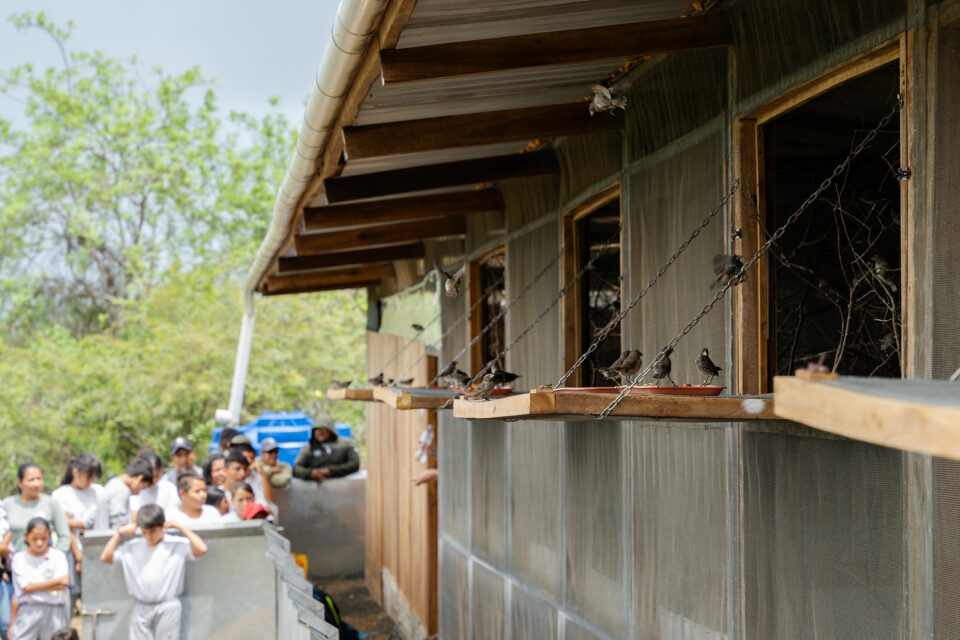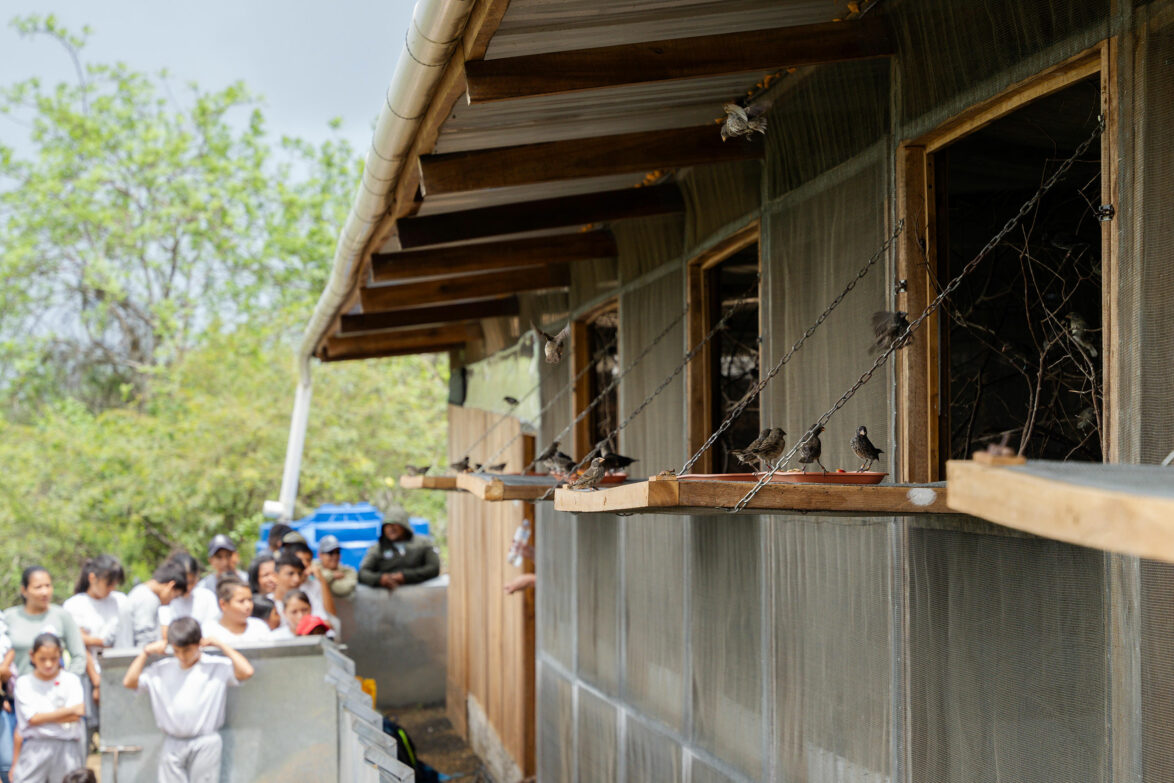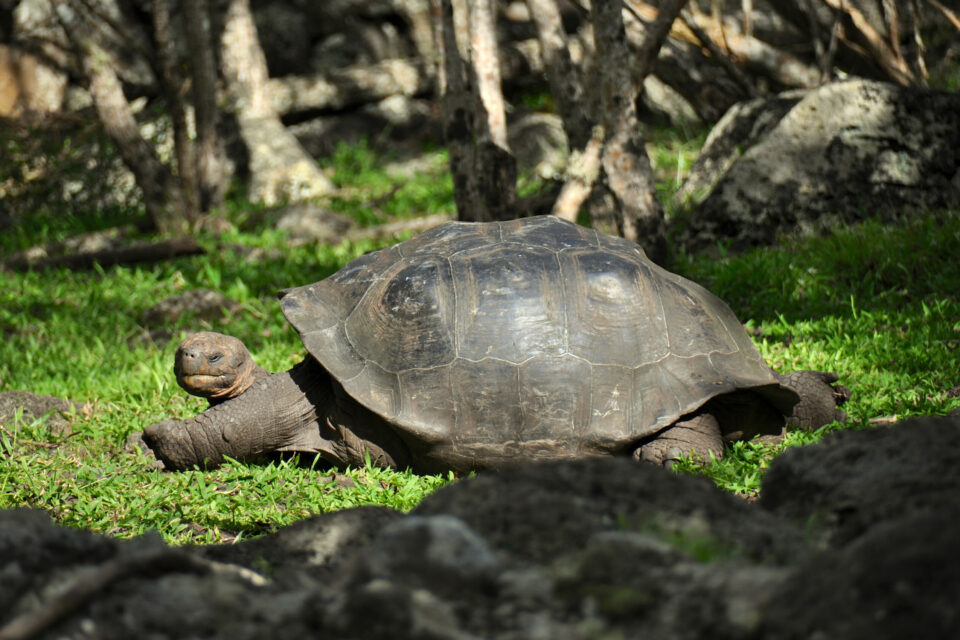

Promising signs on Floreana as five species of finch are released
Five species of Darwin’s finch, which were held safely in captivity during the eradication of invasive species from Floreana, have now been released.
Last October, the restoration of Floreana island reached an exciting milestone, as the eradication of invasive rats and mice, over a decade in the planning, finally began.
The project, led by the Galapagos National Park and the Galapagos Biosecurity Agency in partnership with the Floreana community, co-executed by Fundación Jocotoco and Island Conservation, and supported by GCT, Durrell Wildlife Conservation Trust and others, has as its ultimate aim the reintroduction of 12 locally extinct species and the restoration of the island’s degraded ecosystem. The removal of invasive species is key to the project’s success, and initial indications regarding the eradication of rats and mice, which concluded in December 2023, are positive.
Measures taken to protect non-target species on Floreana included holding reserve populations of endemic birds such as finches in aviaries while the eradication was taking place, and five species of finch have now been safely released: 170 finches into the highlands and 340 into the lowlands. The finches were released in waves, with the final release taking place on 22 February, and a number of medium tree finches, small ground finches, medium ground finches and cactus finches were released wearing radio transmitters.


Restoring Floreana
Once home to some of the most iconic wildlife in Galapagos, Floreana has been devastated by invasive species. We are supporting a hugely ambitious project to restore the island to its former glory.
The Konrad Lorenz Research Center for Behaviour and Cognition at the University of Vienna is leading the post-release monitoring of these finches using a state-of-the-art drone system developed by Wildlife Drones, which can track up to 40 birds at a time. This will allow the team to evaluate the success of the project and observe these finch populations as they re-establish, grow and flourish. The finches play an essential role in the Floreana ecosystem, acting as pollinators, seed dispersers and insect population control.

The Critically Endangered medium tree finch is particularly important, as it is endemic to Floreana island and is found nowhere else in the world. The next stage of the project will include the reintroduction of other species that are endemic to Floreana but currently missing, such as the Floreana mockingbird and the Floreana racer snake, both of which are now restricted to Champion and Gardner, two small islets off the coast of Floreana.
“Releasing these finches onto an island full of food (thanks to the rain) and without predators is incredibly satisfying,” said Roland Digby, Conservation Biologist at Durrell Wildlife Conservation Trust, who led the finch captivity work. “We are already starting to see signs of the island’s recovery following the eradication. Species that were previously missing, like doves, are already starting to return and pair up. It’s really made all our hard work worthwhile.”
We are already starting to see signs of the island’s recovery following the eradication. Species that were previously missing, like doves, are already starting to return and pair up. It’s really made all our hard work worthwhile.

Rewilding Galapagos Appeal
We need your help to rewild the Galapagos Islands so that wildlife thrives alongside people, reducing the human footprint and boosting biodiversity.
Related articles


Double your donation to rewild Galapagos with the Big Give


